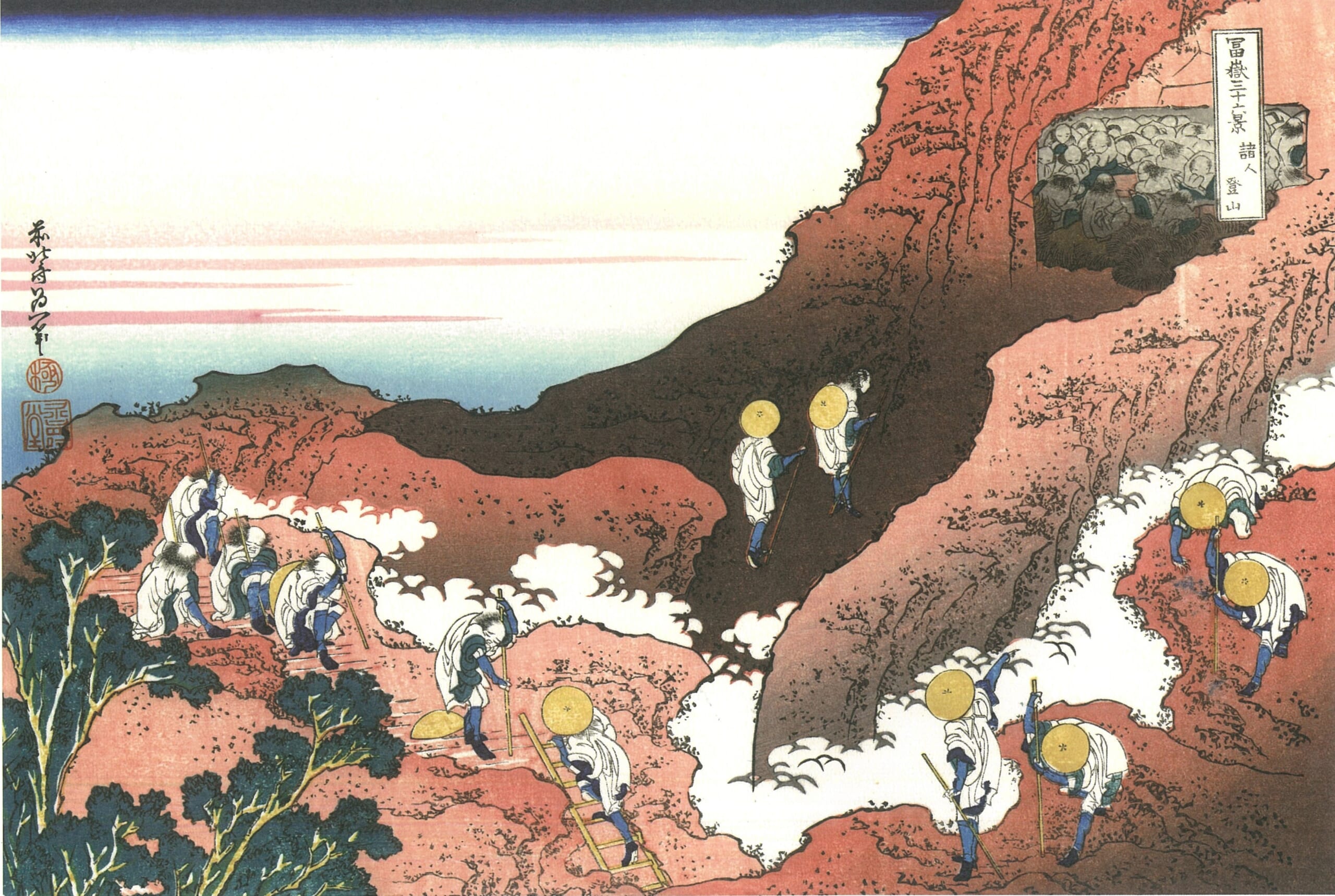Katsushika Hokusai’s Ukiyo-e I will explain People Climbing the Mountain in Thirty-six Views of Mount Fuji.
This is the only ukiyo-e print “Thirty-six Views of Mt.Fuji” that does not depict Mt. Fuji.
All the people depicted are people who worship Mt.Fuji called “Fujiko”.
Amidst the billowing white clouds, here, the men are expressing the appearance of “ohachi mairi” while wielding a cane.
Climb while crawling on the steep mountain surface. Their faces are uniformly exhausted, and you can feel the rigors of climbing Mt. Fuji.
The stone chamber in the upper right of the screen was used by climbers to rest.
Dozens of people are already crouching to rest.
A ladder on the approach to Mt. Komagatake leading to Dainichido is depicted.
This illustration shows the Fuji-ko boom, which triggered the publication of the ukiyo-e Thirty-six Views of Mount Fuji.
Women are not allowed on Mt.Fuji, so women do not appear.
At that time, Fuji-ko climbed the mountain as a representative of local communities and village communities.
Villages of onshi were built at each trailhead to Mt.Fuji, and they carried out missionary activities in various places, mainly in the Kanto region, attracting many worshipers to Mt.Fuji.
In particular, Omiyaguchi and Suyamaguchi, which took a long time to recover after the Hoei eruption, were crowded with many worshipers from Edo and the Kanto region.
At its peak, there were nearly 100 Oshi mansions in Yoshidaguchi.
There were many kosha, and in the late Edo period, it was said that “Edo 808 ko, 80,000 people in kochu”.
This ukiyo-e is from around 1830 to 1832. Hokusai is around 72 years old.



